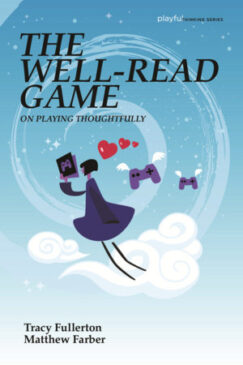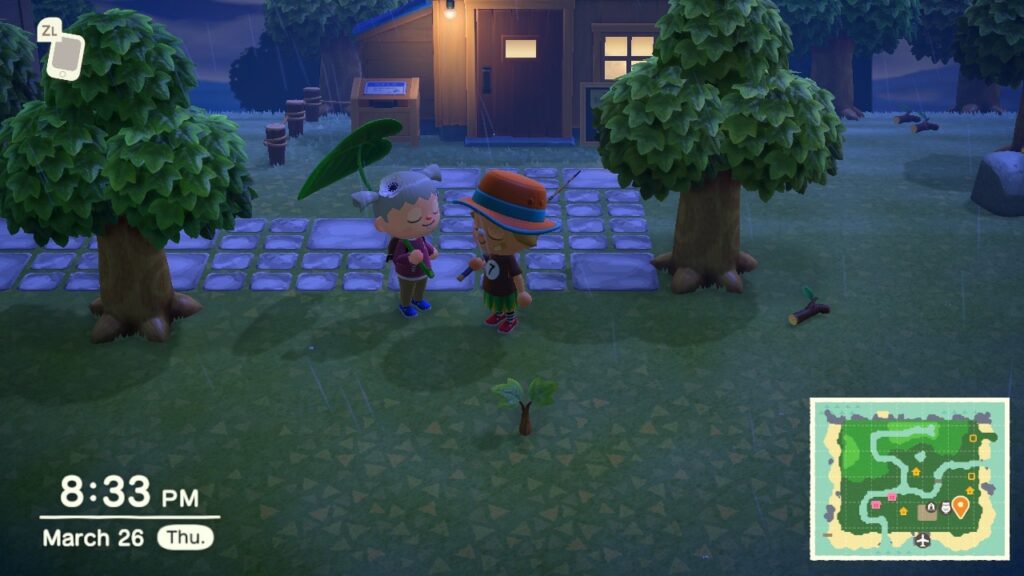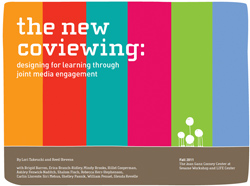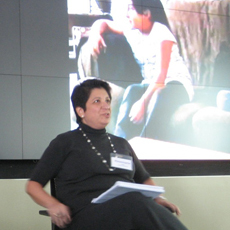
Back in 2008, when my niece was a pre-teen, I spent a lot of time thinking about how to nurture our relationship as she moved beyond childhood into those precarious years when children and their adult caregivers often diverge in their preferences of how to spend quality time together. During this time, I thought about how we could continue to play games together and talk about those games in ways that would engage us both and build a foundation for our relationship as she grew older. My interest in “co-playing” with her led me to develop a research project as a collaboration between the Game Innovation Lab and the Joan Ganz Cooney Center on what we called “intergenerational play.” We studied pairs of children and parents as they played games together to observe and understand what comes from such play, and what designers, educators, parents, and caregivers can do to enhance the prosocial aspects of co-play. These ideas developed into the concept of Joint Media Engagement (JME), or the “new coviewing,” building on decades of work about the importance of co-viewing television between children and parents pioneered by Sesame Workshop.
More recently, in my and Matthew Farber’s new book The Well-Read Game: On Playing Thoughtfully, we revisit the idea of co-play, not only between children and parents, but among players of all ages, as part of a set of techniques for learning to become more thoughtful, literate players of games within caring communities of what we term “well-read” players. In The Well-Read Game, we propose a framework of interpretive play that focuses on the personal, emotional experiences we have when we play games – what we call “player response” – and the way that these responses relate to our readings of texts of all kinds. Our concept of the “well-read game” is based on a convergence of literary, media, and play theories, specifically those of Louise Rosenblatt’s reader-response theory, and Brian Upton’s situational game theory, my own playcentric design theory, and Bernie DeKoven’s well-played game philosophy. It proposes the notion that “readers” of games, as with all texts, co-author the meaning of the experience through their active and thoughtful engagement with them. Encouraging such thoughtful engagement is central to becoming a well-read player and points to ways that we can help players of all ages build a richer understanding of what play can mean if we are paying attention to it.
We suggest that the idea that co-play – when we play together with a friend, parent, or sibling – has the potential to create a safe community to share our personal responses to games. We might co-play with a friend or a parent watching us, experiencing the game with us and open a discussion and co-interpretation about the things that happen while we play. As we found in our early study of intergenerational play, situations in which parents ask questions about the game while co-playing with a child often lead to prosocial encounters, such as opening up a child’s thoughts and feelings about the game or related experiences. In The Well-Read Game, Matthew Farber offers an example from playing the game Unpacking with his then 11-year-old son. Unpacking is a very simple game, one that is easily co-played. At the start of each level, we are presented with a room, or set of rooms, and a set of boxes. (Figure 1)

We click on boxes to reveal items that are stored within them. Then we click to place the items in the rooms. We do this over and over until we have placed all the items. As we unpack the boxes, we develop an interpretation of the narrative of the character whose life we are unboxing. As Farber watches his son play, he engages him in conversation about the game and their own recent move across the country:
“The bedroom looks a little bit like yours,” I comment to my son, who is the one actually playing the game. I am sitting next to him on the couch, making suggestions as he plays. We recently moved multiple times when I took a professorship opportunity across the country, first to an apartment, then to a house. I watch as he methodically clicks the boxes and then puts items in drawers, shelves, and closets, as he did in his own bedroom. As we play more, he remarks to me that each room seems to have one item that does not belong, like a computer keyboard mixed in with kitchen spices. … “That didn’t happen when we moved,” he says. “Mom labeled all of the boxes by room!” As he continues to unbox and unpack, my mind wanders; I think about the unwitting trauma that my career opportunity may have inflicted on my family, who had to pack and move. In my childhood, we never moved. I always went to the same school and woke up in the same bedroom. My son has moved twice already, each time to a new bedroom, a different neighborhood, another school. As he unpacks, we hope that he, too, unboxes a better life.
When co-play occurs between parents and children, the children may be the experts, reading and responding to the game aloud, narrating and explaining as they play. Parents might prompt children to think more introspectively about the situations occurring in the game, guiding younger players to become more thoughtful about what they are experiencing. Like the tradition of reading books together, co-playing can be an important aspect of scaffolding young players to become sensitive and open to their emotional responses to a game. Even when siblings, friends, or partners play together, the kind of discussion that co-play provokes can provide an excellent foundation for capturing and developing our responses to play. The most important part of these situations, however, is the sense of safety they allow for speaking about our emotional responses to play. Normalizing this kind of open sharing of emotional responses is a good foundational step in building caring communities of well-read players, and can lead to an opportunity for larger group play, but also for deeper journaling and thoughtful conversation about gameplay.
As we discuss in The Well-Read Game, the process of becoming a well-read player, like that of becoming a lifelong reader, involves both the personal process of negotiating a text and also the social practice of developing and sharing ideas with others. These practices can help us build the same skills we need to form more effective communities and participate in them more fully. Rosenblatt’s deeper reason for developing better readers of literature stems from a desire to encourage more compassionate citizens: “Ultimately,” she writes,” if I have been concerned about methods of teaching literature, about ensuring that it should indeed be personally experienced, it is because … it helps readers develop the imaginative capacity to put themselves in the place of others––a capacity essential in a democracy, where we need to rise above narrow self-interest and envision the broader human consequences of political decisions.” This resonates with our desire to promote better readers of games. Helping our children, our friends, and our partners to play more meaningfully can help them to become open to the kinds of understandings that games can provide and to becoming more articulate “players” of our real world.

Today, my niece is an adult and a preschool teacher who co-plays many games with her young students. Our relationship has continued to change as we both grow older, but one moment of joyful co-play that I will always recall is meeting up on her little island in the game Animal Crossing during the early days of the COVID shutdown. I joined her on an evening when it was raining in the game, and I hadn’t seen her in the real world in what at that time seemed like an eternity. (It would get a lot longer!) As we ran around the island, she showed me everything she had built, we went fishing, and we played like children together. I was sitting alone on my sofa, starving for human companionship, and this simple experience of playing with her brought tears to my eyes as I realized how precious it was to run and play with her, sharing play, and finding comfort during the precarious moment of a worldwide pandemic. We could talk and share both emotions together–the joy and the fear–because of the foundations we had built in play.
This is the potential of co-play: the creation of strong bonds and the development of prosocial attitudes towards others in play. Playing well together is not just behaving and following the rules, it is the development of social literacy and understanding of each other and the world through play. Imagine the possibilities of a world where we take these skills into our interactions with others in and beyond the game.

Tracy Fullerton, an experimental game designer, is Professor and Director of the Game Innovation Lab at the University of Southern California Games Program.

